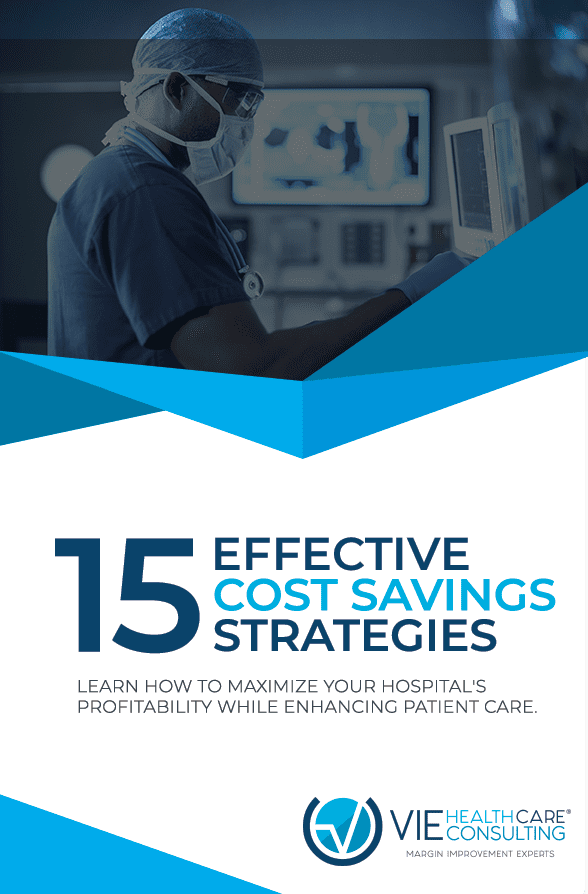VBP Program Should Impact Supply Chain
This article was written by Jim Cagliostro.
Whether you like it or not, CMS’s Hospital Value-Based Purchasing (VBP) Program should impact the way your hospital does business and affects your supply chain.
More specifically, the VBP Program, implemented on October 1, 2012 by the Centers for Medicare and Medicaid Services (CMS), should cause you to continuously evaluate your supply chain to maximize value in your day-to-day operations.
The VBP Program should mean your hospital continuously evaluates your supply chain to maximize value in your day-to-day operations. Click To Tweet
What is the VBP Program?
The overall objective of the VBP Program is “to improve care across the entire healthcare delivery system, including hospital inpatient care, by tying Medicare payment to quality and cost measure performance.”
Medicare established this program with the goal of incentivizing hospitals to concentrate on the quality of the care they delivered, rather than simply focusing on the quantity of services they provided. While the program may seem complex and burdensome to some organizations, there is no denying that financial motivation is one of the most effective ways to implement change.
How does the CMS encourage hospitals to improve their quality of care?
To answer this question, we must understand the Inpatient Prospective Payment System (IPPS), which was created in October 1983. Under the IPPS, the approximately 2,800 participating hospitals throughout the country are paid a predetermined rate for each Medicare admission based on their Medicare Severity-adjusted Diagnosis Related Group, which is calculated using the following information:
- Principal Diagnosis (why the patient was admitted).
- Complications and Comorbidities (other secondary diagnoses).
- Surgical Procedures.
- Age.
- Gender.
- Discharge Destination (routine, transferred, or expired).
The initial purpose of the IPPS was “to change hospital behavior through financial incentives that encourage more cost-efficient management of medical care.”
Once again, we see the age-old understanding that money is a powerful motivator.
If a hospital is given a fixed amount for Medicare patients with specific diagnoses or conditions, then that hospital could increase its profits by reducing the cost of care for those particular patients.
After almost 30 years, the CMS realized the need to find a way to encourage hospitals to not only increase their number of Medicare patients, but also to improve the overall care and experience for each of those patients.

Enter: the Value-Based Purchasing Program
Where does the supply chain fit into all of this?
To understand how the supply chain is impacted by the VBP Program, you must understand how the program works which can be broken down as follows:
- First, a two percent reduction is applied to all payments that are due to hospitals participating in the IPPS.
- This money that is initially withheld is then distributed to all of the hospitals based on their performance during a predetermined time period. Hospitals that perform well receive more than the original two percent while hospitals that underperform receive less.
- A Total Performance Score (TPS) is calculated for each hospital based on four domains that are weighted equally:
– Clinical Care.
– Safety.
– Person and Community Engagement.
– Efficiency and Cost Reduction.
The domain that is most directly connected to your hospital’s supply chain is the Efficiency and Cost Reduction domain. Scoring for this domain is based on the Medicare Spending Per Beneficiary (MSPB) Measure, which compares the cost to Medicare for a specific episode of care at your hospital compared to all hospitals nationally.
In other words, this is where CMS measures the overall cost of care in an effort to recognize hospitals that provide high-quality care at lower costs to Medicare.
An episode of care is defined as “services provided by hospitals and other healthcare providers the three days prior to, during, and 30 days following a patient’s inpatient stay.”
How does a hospital decrease Medicare Spending Per Beneficiary without compromising the quality of its care for that patient?
The answer is in the supply chain, which can account for up to 45% of a hospital’s costs. However, the supply chain is an area that most healthcare leaders either do not think to evaluate or simply do not have the time or staffing to address when looking for savings.
Your supply chain can account for up to 45% of your hospital’s costs. Click To Tweet
Reviewing contracts and performing line item analysis on invoices can help bring to light variations, waste, or even pricing errors that are cutting into your bottom line. Millions of hospital dollars can be saved by renegotiating contracts, streamlining procedures, automating processes and eliminating underutilized equipment and technology. By lowering the cost of your supply chain, more resources can be directed to improving patient care and experience.
In our experience at VIE Healthcare, we have seen vendors charge drastically different prices for comparable, and even identical, products.
By analyzing your invoices and contracts and benchmarking your costs with what hospitals across the country are paying for those same products, VIE Healthcare will help you find savings in your supply chain.
Overall Impact
Indirectly, the supply chain can also have a significant impact on the other domains that are used to calculate your hospital’s TPS. The right supply chain strategy will not only increase your profits, but also has the potential to improve operating efficiency, patient care and patient safety.
By finding better products and services at better prices, improving your supply chain can even enrich the overall patient experience and boost patient satisfaction.
All of these factors will contribute to a better overall TPS and increased reimbursement from Medicare.
To learn more about how VIE Healthcare Consulting can help you address your supply chain needs, contact us.
For a complimentary consultation, call our office today at 1-888-484-3332, Ext 500 or email us at info@viehealthcare.com.



